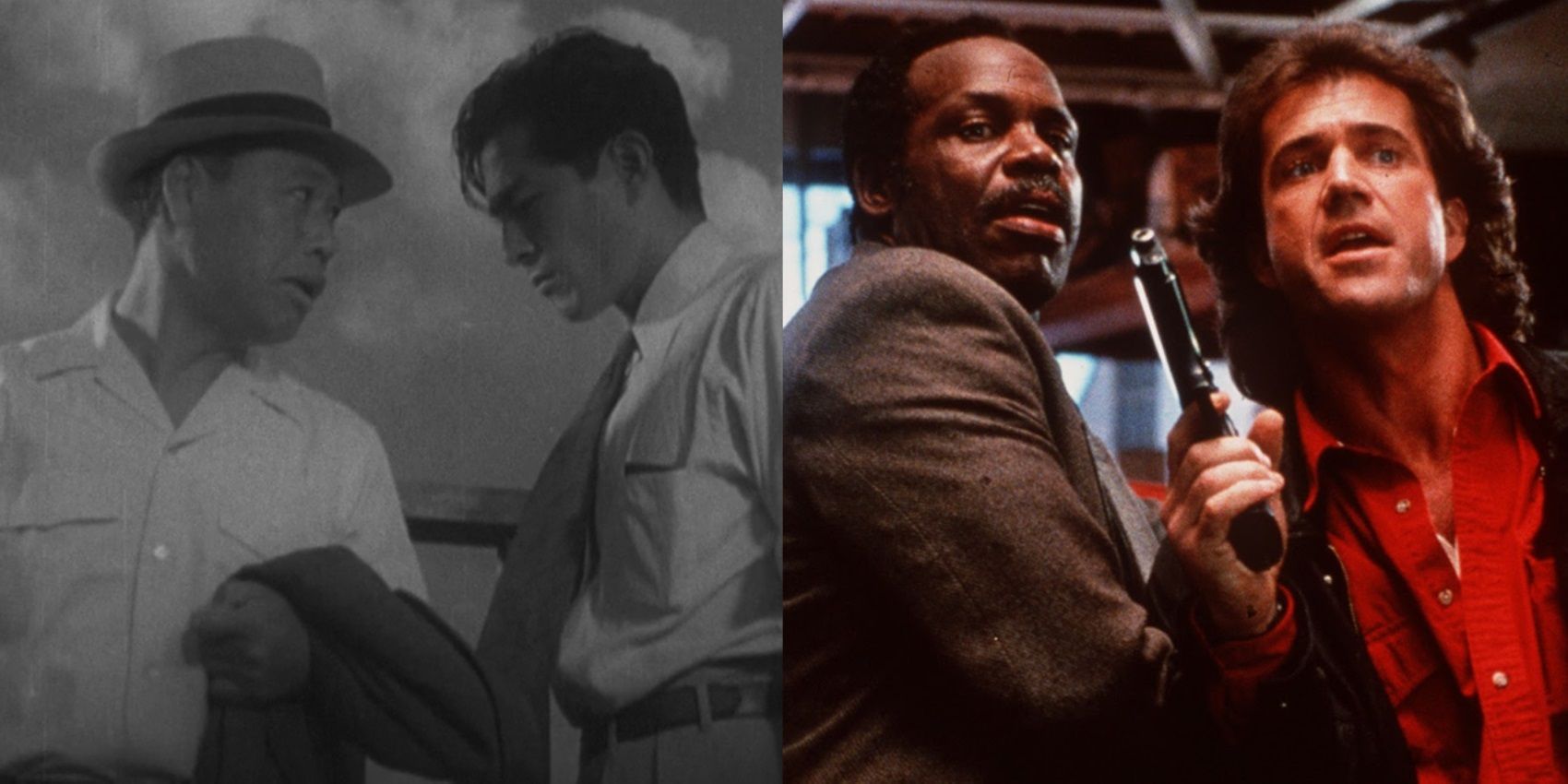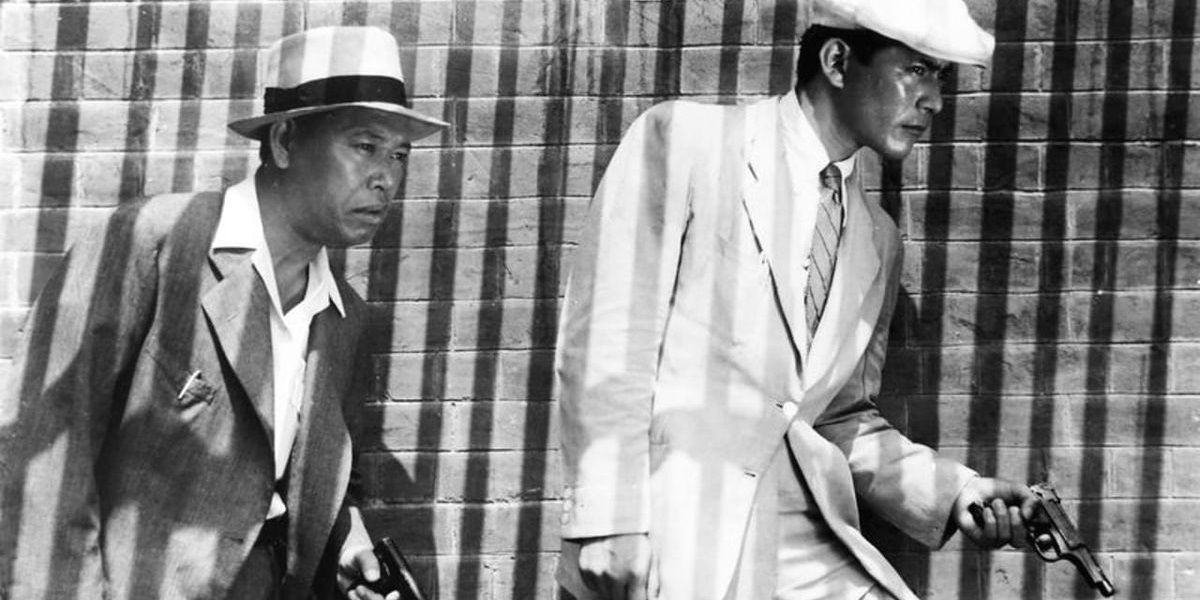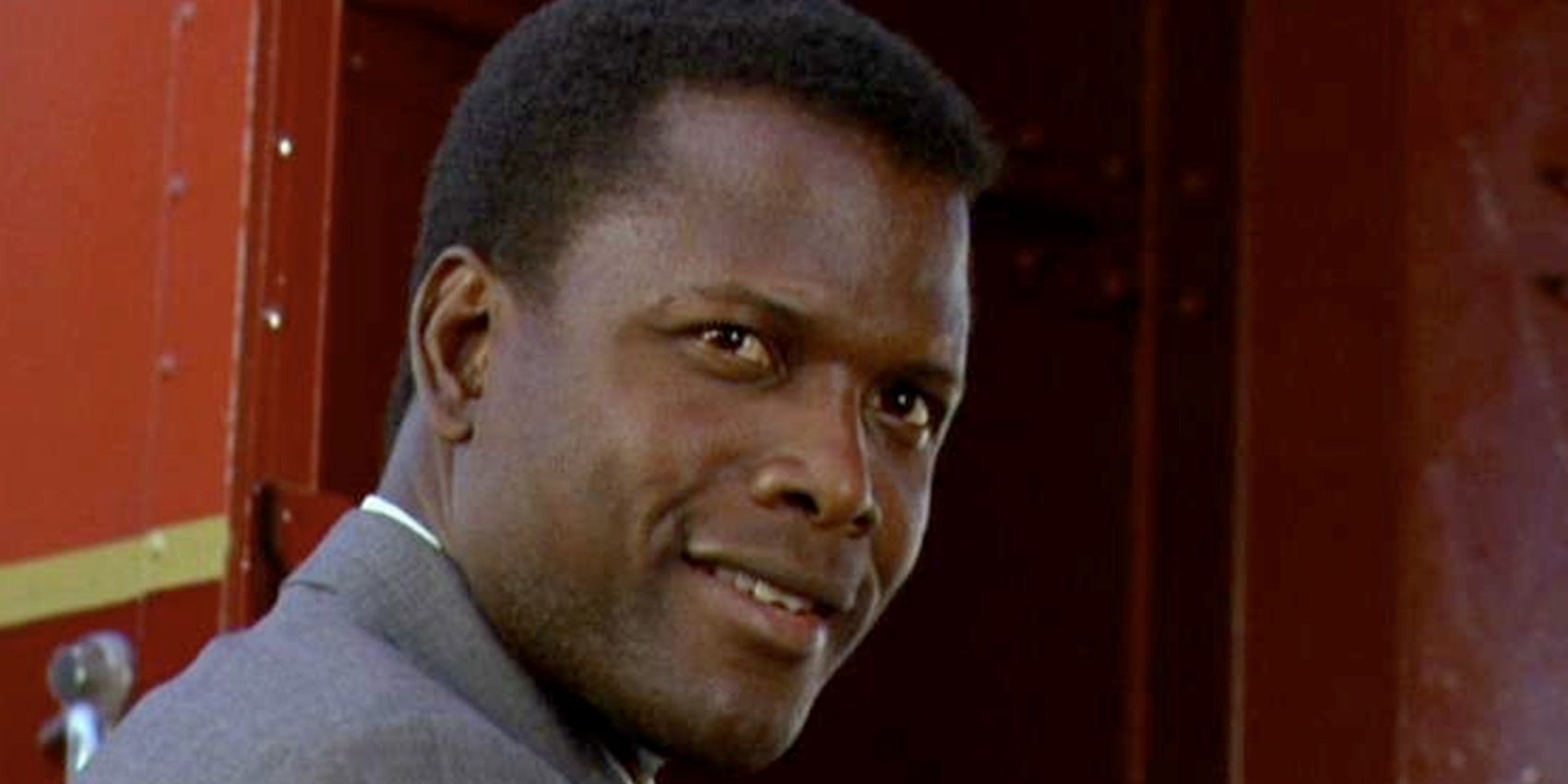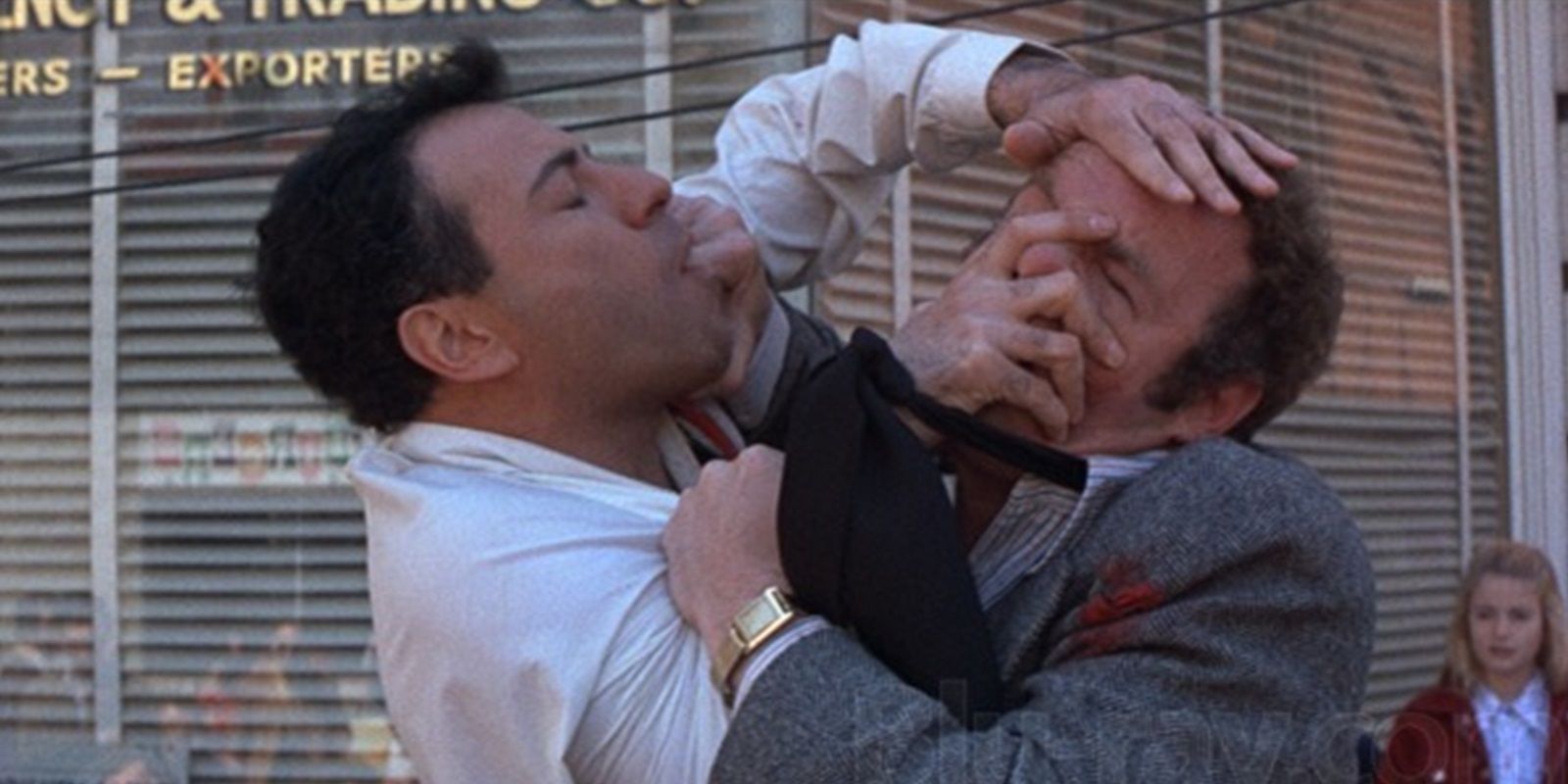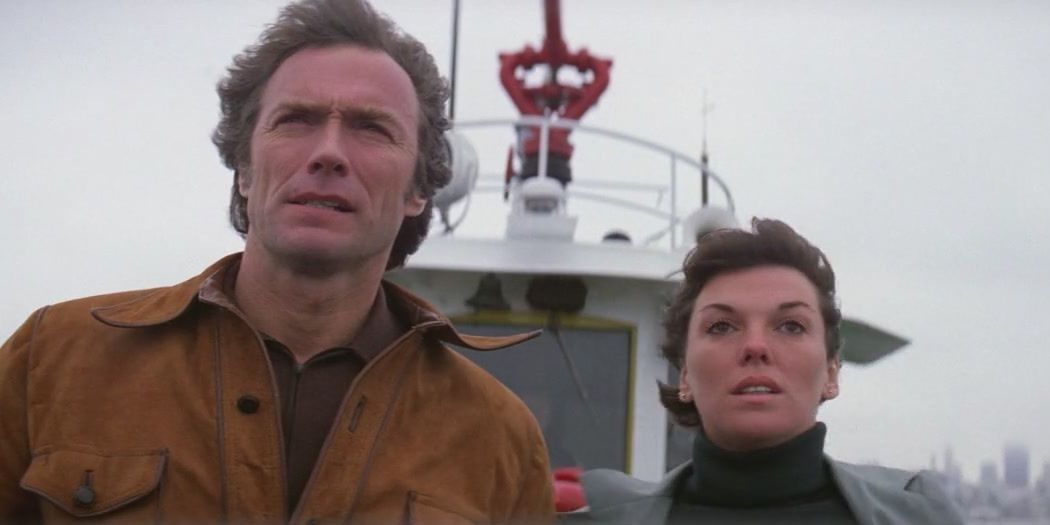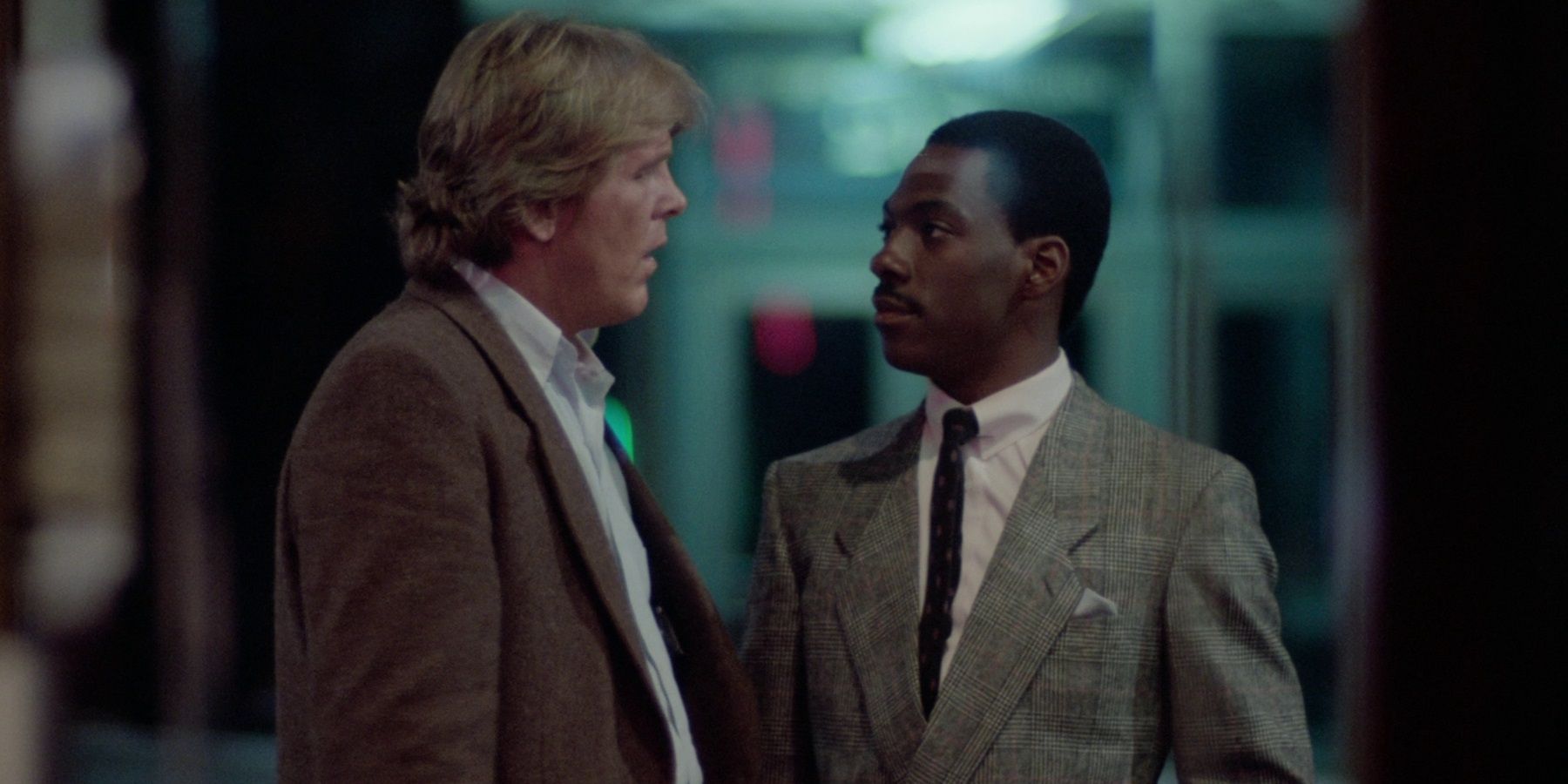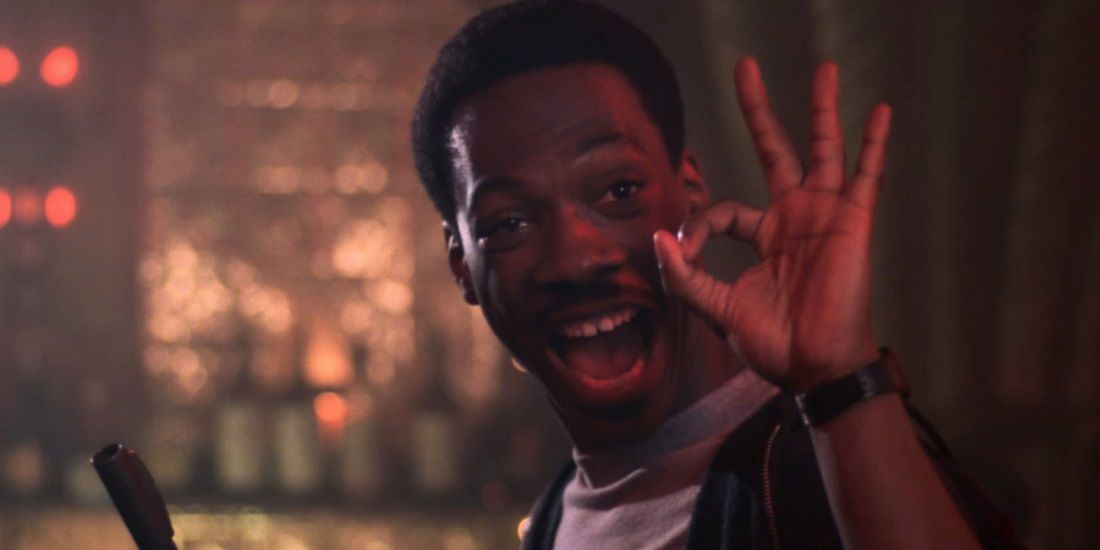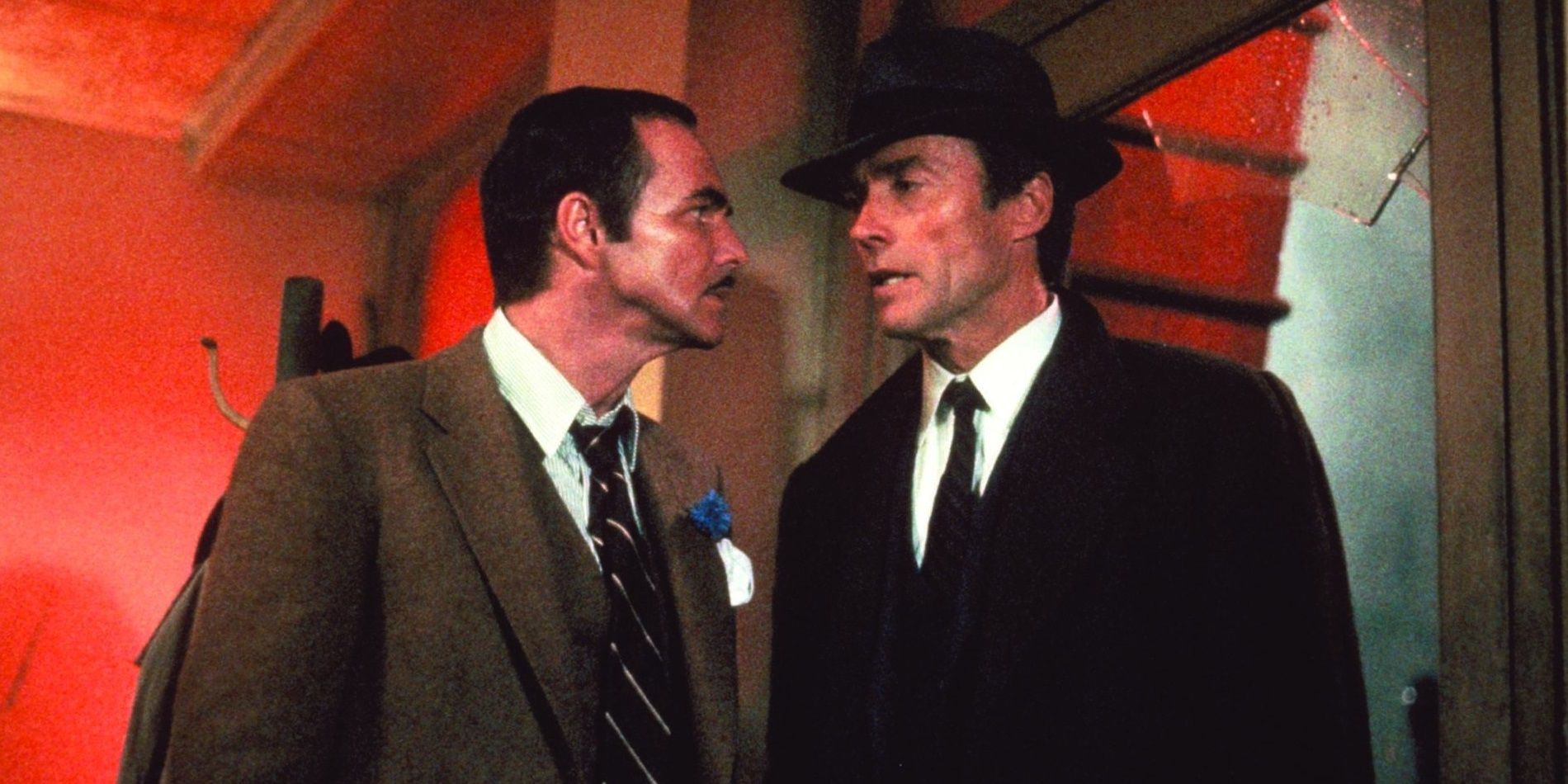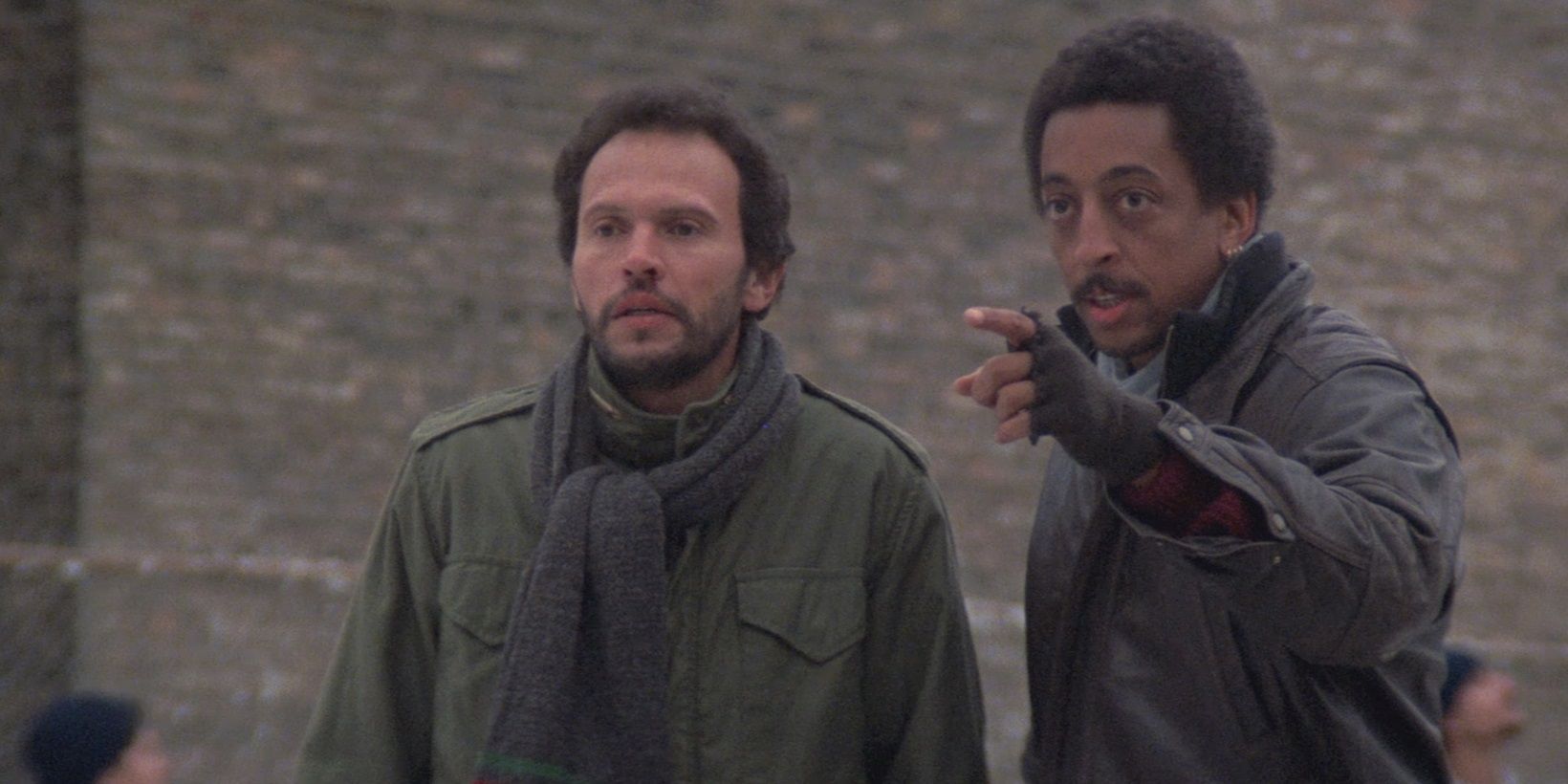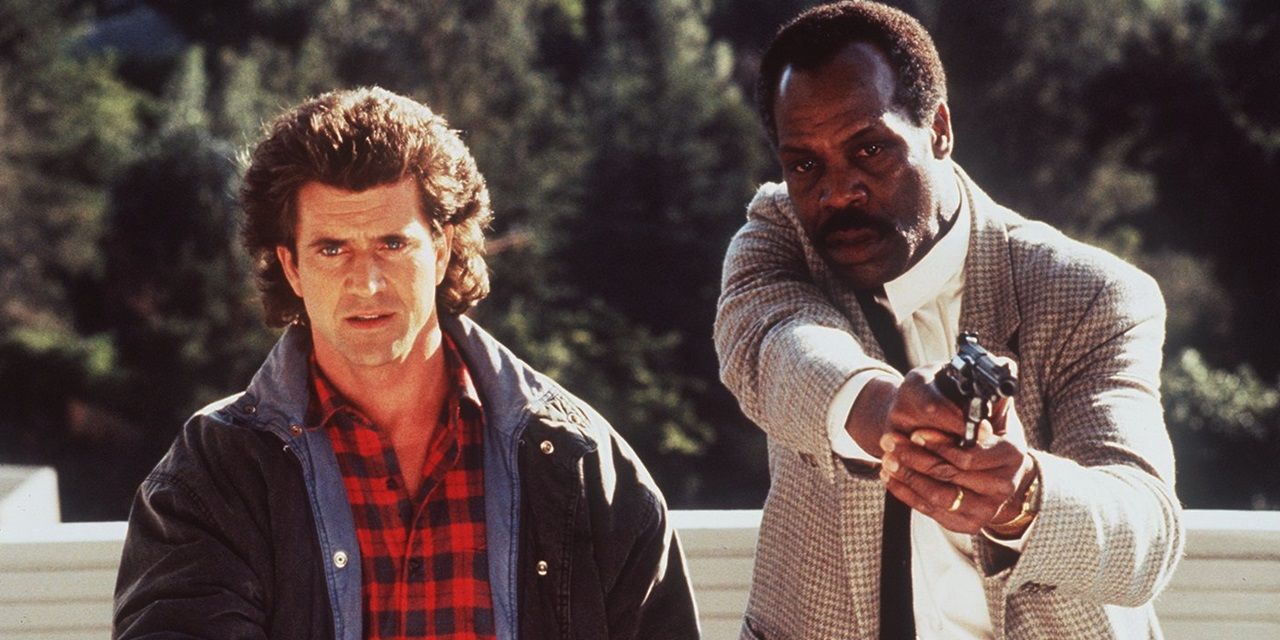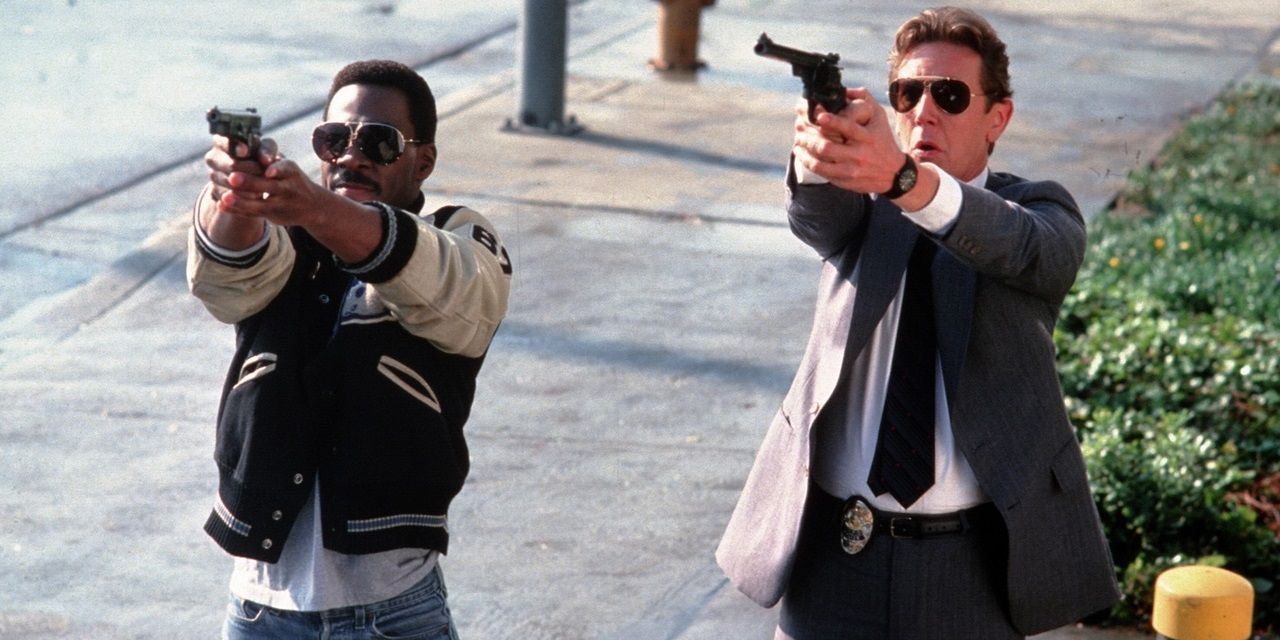The “buddy cop” genre is one of the most entertaining subcategories of action cinema. Not only do “buddy cop” movies present plenty of opportunities for car chases, shootouts, and explosions; they’re a great showcase for the on-screen chemistry shared by two well-matched actors like Nick Nolte and Eddie Murphy, or Mel Gibson and Danny Glover.
Action movie fans often think of Lethal Weapon as the original “buddy cop” movie. It was certainly one of the earliest entries, and laid a lot of the groundwork for the tropes and conventions of these stories. But the subgenre can actually be traced all the way back to the 1940s with a classic Akira Kurosawa noir.
Stray Dog (1949)
The “buddy cop” subgenre wouldn’t enjoy its heyday until the 1980s, but it can be traced all the way back to 1949 with Akira Kurosawa’s classic noir Stray Dog. It stars Toshiro Mifune as the newly promoted Detective Murakami, who’s paired up with veteran Detective Satō, played by Takashi Shimura, to search Tokyo for his stolen Colt pistol.
This movie established all the tropes that “buddy cop” fans are now familiar with: two detectives from different backgrounds with different personalities join forces to tackle a complicated case.
In The Heat Of The Night (1967)
Modern “buddy cop” movies traditionally deal with lighthearted banter, but one of the earliest examples – 1967’s In the Heat of the Night – dealt with racial tensions in a small Southern town.
Sidney Poitier stars as Virgil Tibbs, a Philadelphia cop who becomes a suspect in a murder investigation while traveling through Mississippi. Rod Steiger co-stars as the prejudiced police chief who reluctantly teams up with Tibbs to get to the bottom of the murder case and clear his name.
Freebie And The Bean (1974)
The first conventional American “buddy cop” movie, Freebie and the Bean, stars Alan Arkin and the late, great James Caan as a pair of maverick detectives on a warpath across San Francisco to bring down the city’s biggest crime lord.
Freebie and the Bean is not a traditional “buddy cop” narrative because the buddied-up cops aren’t mismatched – they’re both as reckless and dim-witted as each other. It was panned by critics, but the tropes it laid out paved the way for much stronger action comedies in the years that followed.
The Enforcer (1976)
In the third movie in the Dirty Harry series, 1976’s The Enforcer, Harry is reluctantly teamed up with a rookie cop played by Tyne Daly. Daly made a great foil for Clint Eastwood’s grizzled rule-bending lawman.
The Enforcer is one of the goriest Dirty Harry movies, but it also has a delightfully dark sense of humor. During a foot chase, Harry crashes through a window and lands in the middle of an adult film shoot. The whole thing culminates in an action-packed finale on Alcatraz Island.
48 Hrs. (1982)
Legendary action director Walter Hill contributed to the foundation of the “buddy cop” tropes – and made Eddie Murphy a movie star – with 48 Hrs.’ tale of bickering crimefighters. Nick Nolte plays a stern-faced cop and Murphy plays the street-smart convict he lets out of prison for 48 hours to help him catch his old partner-in-crime.
With Hill behind the camera and Nolte acting as a deadpan foil to Murphy’s motormouth antics, 48 Hrs. strikes the perfect balance between thrilling action and laugh-out-loud comedy.
Beverly Hills Cop (1984)
Eddie Murphy returned to the “buddy cop” genre a couple of years after 48 Hrs., this time on the other side of the law. Beverly Hills Cop has a fun take on the formula, because there are three mismatched cops in the mix.
Murphy plays Detroit cop Axel Foley, who takes a “vacation” to track down his best friend’s killer in Beverly Hills. Judge Reinhold and John Ashton co-star as the local cops who initially harass Foley but later team up with him when they realize he’s onto something.
City Heat (1984)
Released two days after Beverly Hills Cop, City Heat stars Clint Eastwood as a police lieutenant and Burt Reynolds as a private eye. The premise is a fun take on the “buddy cop” concept. The two central characters used to be partners when the P.I. was a cop. They reluctantly reunite after years of bitterness to investigate a murder together.
Since it teamed up two of the biggest movie stars in the world at the time, City Heat was expected to be a huge box office hit. But it ended up being a commercial disappointment.
Running Scared (1986)
After helming 2010: The Year We Make Contact, Peter Hyams returned to Earth to direct the “buddy cop” thriller Running Scared. Billy Crystal and Gregory Hines star as a pair of Chicago cops who resolve to retire and open a bar in Florida after a near-death experience – but not before making one last arrest.
Running Scared struggles to maintain a consistent tone as its humor is goofy, but its action is dark and violent. But Crystal and Hines’ impeccable chemistry carries the piece.
Lethal Weapon (1987)
Shane Black solidified the tropes of the “buddy cop” genre with his script for Lethal Weapon. Riggs is a hotshot young renegade who plays by his own rules, while Murtaugh is a by-the-book veteran on the brink of retirement who’s “too old for this s**t.”
Richard Donner brought Black’s script to life with sharp direction and Mel Gibson and Danny Glover were perfectly matched in the lead roles. Their chemistry sustained for three sequels (with a fourth follow-up on the way).
Beverly Hills Cop II (1987)
A couple of months after Lethal Weapon hit theaters, Murphy reprised his role as Axel Foley in Beverly Hills Cop II. Directed by action movie icon Tony Scott, the sequel saw Foley reunite with Detectives Rosewood and Taggart to take down a gang of gun runners.
Foley was the perfect role for Murphy’s comedic talents, because his undercover antics allowed Murphy to ad-lib in the guise of various wildly different characters.

